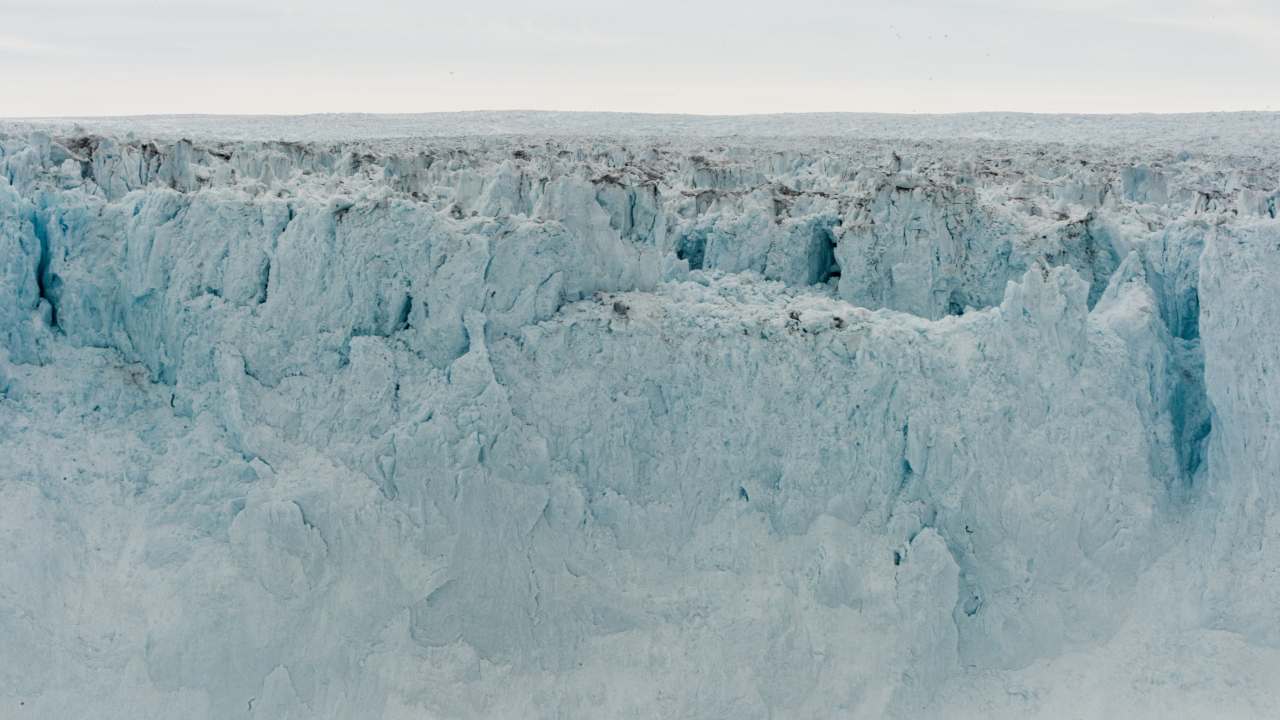From aeroplane hundreds of feet above Greenland’s largest glaciers, scientists are peering down to map melting ice and flowing rivers in the glaciers below. They’ve found many tiny blue pools of melting ice on the ground that has formed a lot sooner than one might expect for this time of the year. It isn’t summer in the Arctic yet, and the premature melting researchers are seeing in Greenland glaciers, has them concerned. This finding is a big deal! Blue ponds forming on the icy surface before summers strongly suggest that the region could experience above-average levels of melting ice this season. [caption id=“attachment_6600391” align=“alignnone” width=“1280”] Greenland glaciers are facing twin threats. Image: Flickr[/caption] Researchers part of NASA’s Operation IceBridge project are watching these glaciers as part of a larger mission to study the changes in Earth’s polar ice in recent years.
@NASA #IceBridge ✈ observed surface melt north of Jakobshavn 💧💧
— Brooke Medley (@DrBrookeMedley) May 7, 2019
Meltwater is filling in the crevasses and ponding on the surface. 👇👇
While the blue water is breathtaking 👀, the early onset of melt over Greenland is concerning for 🌍 pic.twitter.com/56g0bZDNDh
“Although the story of the summer of 2019 in Greenland hasn’t yet been written, it’s starting on a worrying note,” Joe MacGregor, project scientist for NASA’s Operation IceBridge,
told Mashable. [caption id=“attachment_6600511” align=“alignnone” width=“1280”] NASA’s airborne science lab — the P-3B (left) and the DC-8 (right) — have been used extensively by the IceBridge mission. Image credit: NASA[/caption] More than any other polar region in the world, Greenland has seen melting at higher-than-normal rates for two decades now. Pre-summer ice melts have been seen before in late-May and early-June, but the temperature in Greenland has been much warmer than average this year, MacGregor explained.
Well above average temperatures across all of #Greenland over the last week. Follow forecasts for Greenland (weather and surface mass balance) this summer using the MARv3.9 model (forced by GFS) at https://t.co/xeu1qQ3ksc pic.twitter.com/BxyWsnR2Gc
— Zack Labe (@ZLabe) May 5, 2019
The region pictured in the video is in west-central Greenland, home to the massive, fastest-moving glacier Jakobshavn Isbræ. Scientists in the IceBridge project have visited the Jakobshavn glacier and some of the large glaciers nearby three times this season, and the early melt seems to be affecting all of these frozen reserves to varying degrees.
From Sunday's #IceBridge flight: Emerald green ponds weave around ice and debris near the terminus of Russell Glacier, which is showing signs of an early onset into the melt season pic.twitter.com/u7mgVnWmdd
— ARCHIVED - NASA Ice (@NASA_ICE) May 7, 2019
Meltwater and debris along the edge of Eqip Sermia in Greenland, from #IceBridge's Monday flight pic.twitter.com/pl3rldhe1g
— ARCHIVED - NASA Ice (@NASA_ICE) May 7, 2019
A supraglacial lake forms in a depression behind jagged ice towers, from #IceBridge's flight on Monday pic.twitter.com/BUFUjLTbAn
— ARCHIVED - NASA Ice (@NASA_ICE) May 7, 2019
The future of Jakobshavn is something scientists are keen to watch. It’s famous among glaciers as the source of the iceberg that sunk the Titanic. But this bed of ice — over a kilometre and a half thick — is Greenland’s single-largest reserve of frozen freshwater. In the long run, ocean temperatures are gradually warming, but these glaciers are also extremely sensitive to ocean temperatures, making it a twin threat. Reliable data from satellites have tracked Greenland’s ice loss, which is six times faster than 40 years ago. Exposed ice also prompts the water beneath to absorbs even more heat, and speed up the melt even further.


)
)
)
)
)
)
)
)
)



